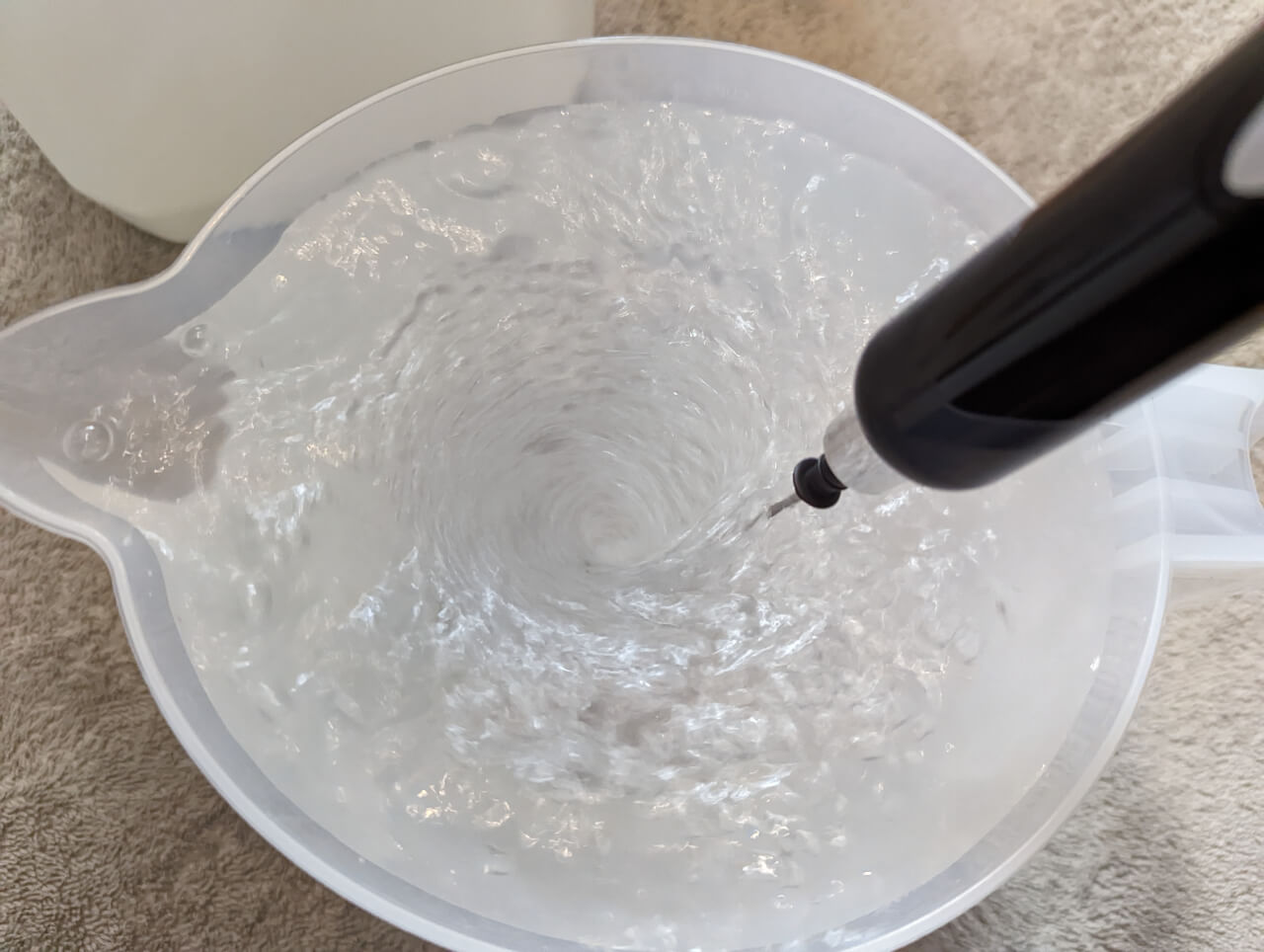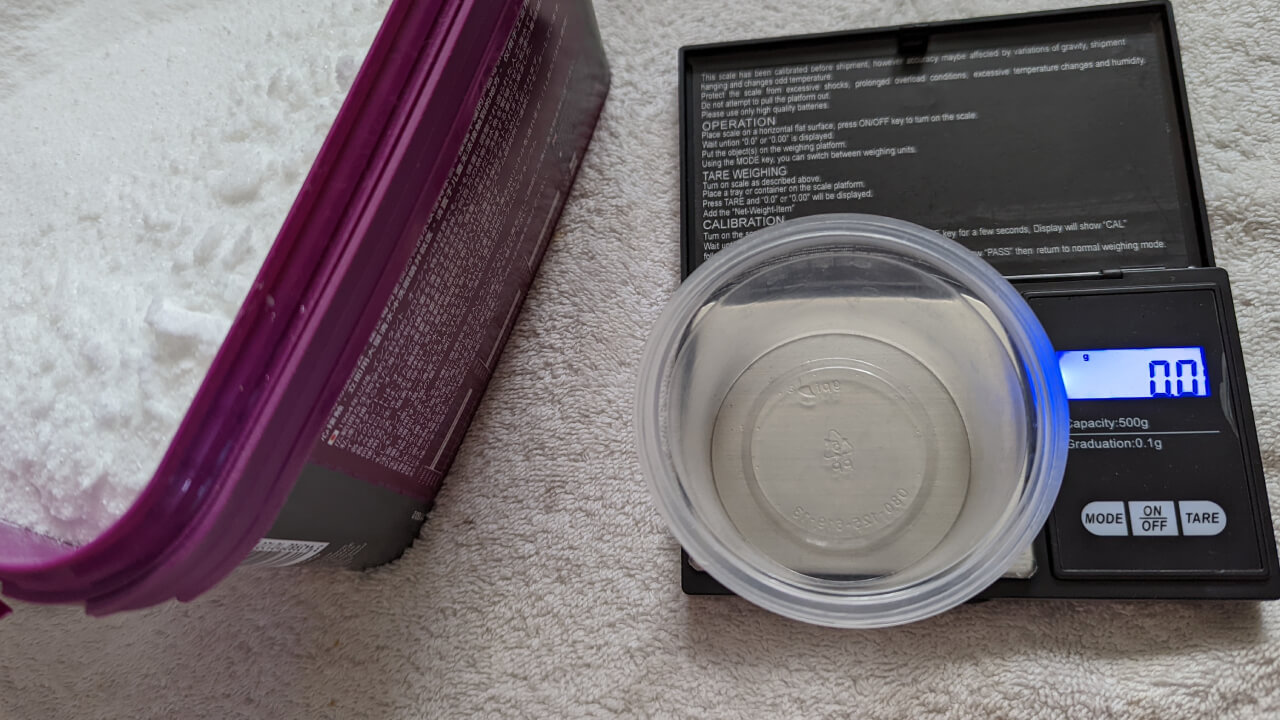Brackish water is a midway point between freshwater and saltwater.
There aren’t too many cases where a shrimp keeper needs to mix up brackish water, but some examples are:
- Using in Opae Ula tanks
- Setting up a larvae tank, to breed Amano shrimp
This guide will walk you through the process of mixing water for an Opae Ula aquarium.
What you’ll need
- Jug or container
- Spoon
- Sea salt mix
- Reverse Osmosis (RO) water, or distilled water
- Measuring scale for dosing the salt
- Refractometer to measure the salinity
Sea salt minerals
One of the most popular salts, and the one I’d recommend is Instant Ocean.
It dissolves quickly and has all the elements needed for building up a healthy Opae Ula colony.
You need more than just salt
You cannot just use pure salt, like rock salt.
You might technically be able to get the desired salinity, but lots of other vital nutrients will be missing.
Using something like Instant Ocean’s salt will ensure you’ve got everything necessary for a healthy ecosystem to grow.
Good quality water
You should try to use the purest water you can find.
Ideally, use something like a Reverse Osmosis filter at home. Distilled water will also be fine if that’s all you have available.
Tap water
Tap water may work, only if you have incredibly soft water.
You will need to use a dechlorinator to make tap water safe for use.
Tap water is usually treated with chemicals that can be harmful to the bacteria in the water, or your shrimp.
Some elements in tap water may also react with the ingredients of the salt mix and have unwanted side effects.
How to mix brackish water
In a simple summary:
- Fill the jug with water
- Measure enough salt
- Stir the salt in until it’s fully dissolved
- Measure the salinity
- Leave the water to settle for a while
Measuring the salt dose
The amount of salt you need will vary based on a few things:
- How much water you’re making
- The salt mix you’re using
- The target salinity
I use a small plastic cup to scoop salt out of the tub, and measure it using a small jewellery scale.
You’ll definitely want a scale capable to measuring to 0.1g precision to do this confidently.
Opae Ula example
Using Instant Ocean mix for an Opae Ula tank, with a salinity target of 1.010 sg, you will need:
- Metric: 14 grams of salt per litre
- Imperial: 1.9 ounces of salt per gallon
Dissolving the salt
Stirring the salt until it’s completely dissolved can take a bit of effort, especially with a lot of water.
I personally use an electric milk frother to stir the water quickly.

If you rush this part, you may get an inaccurate salinity reading before adding it into your tank. In a bad case, this could potentially harm your shrimp.
Temperature can play a part in how quickly the salt dissolves. Warmer water will take in the salt more easily.
If you do heat up the water, make sure you let it cool back down before using it in your tank.
Measure the salinity
Never assume, always check.
Just because you’ve followed the instructions on dosing, you should always double-check the salinity is what you’re expecting to see.
There’s a risk that some of the salt could be defective and cause it to be higher or lower than you wanted.
Leave it to settle
If you have the time, it’s a good idea to let the salty water settle for a few hours.
This gives time for any dissolved gases to escape, and ensure that all of the salt has dissolved.
This extra step will help to prevent any unexpected salinity spikes.
Using the brackish water
Double check one last time that the new water parameters are correct.
A basic checklist includes:
- Salinity
- Temperature
- pH level
Then, once you’re totally happy there aren’t any salt crystals left in your jug, you’re ready to drip acclimate the new water in to your tank.

